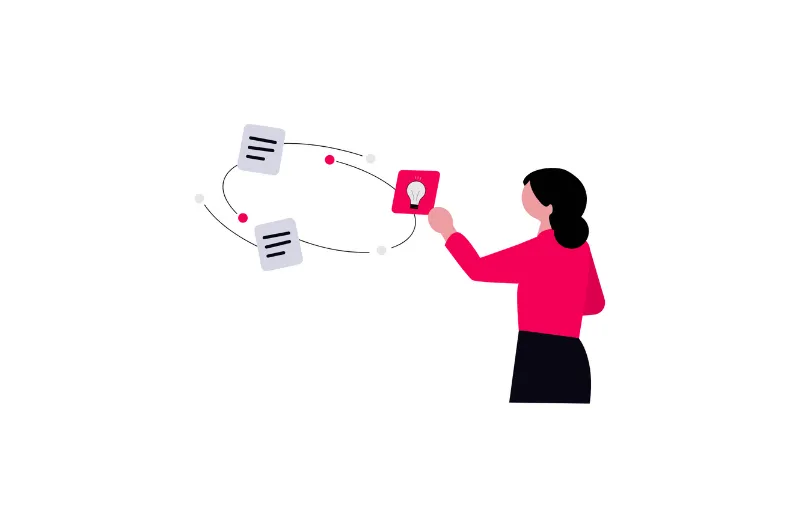How a PIM for R&D helps your company grow

In many companies, the customer service team experiences a paradox. He is the one who has the most contact with users, but he rarely has the capacity to transform that information into something actionable.
This situation reflects a larger problem: information is distributed across departments, teams depend on each other, and innovation processes slow down.
This is where two concepts come into play that, combined, can make a difference: PIM And R+D.
PIM for R&D
PIM (Product Information Management): it is a tool that centralizes all product information so that any area of the company can access reliable and up-to-date data.
For its part, R&D (Research and Development): it is the set of processes that allow a company to improve what it already has or create something new. It's not just about science or technology, but about listening to the market, testing ideas and learning quickly.
When both worlds connect, a continuous flow between the knowledge that comes from customers and the strategic decisions made by technical teams.
And that's where customer service ceases to be reactive and becomes meaningful contributions.
From Dependency to Autonomy
Let's imagine a typical organization. Every time a customer reports an issue or proposes an improvement, the customer service agent takes note and sends it to the product team. It evaluates if it's relevant, collects more information and, hopefully, includes it in the list of future tasks.
The process is slow and, above all, relying.
The care team cannot search on its own if something had already been detected before, compare versions of the product or identify patterns among several customers. In other words: has the data, but not the tools to analyze it.
This is where the PIM comes in.
When the PIM is configured so that non-technical teams can navigate, filter and consult, the barrier between who receives problems (attention) and who manages knowledge (product) is eliminated.
.webp)
Advantages of implementing PIM with R&D in a company
1. Improves operational efficiency
Implementing a PIM eliminates duplication of information and unifies data sources, allowing all teams to work on the same updated knowledge base.
This centralization reduces errors in catalogs, technical data sheets or customer responses, and streamlines internal processes.
2. Accelerate innovation
- PIM organizes data; R&D converts it into improvements.
- Teams can detect patterns, incidents, or customer demands more quickly.
- The transition from an idea to a prototype or to a product update is streamlined.
This speeds up the transition from an idea to a prototype or a product update.
Thus, if numerous customers request the same functionality, the system objectively demonstrates this and allows it to be prioritized within the development roadmap.
3. Strengthen collaboration between departments
The PIM breaks down information silos and encourages coordination between departments.
- Service, product, marketing and sales share information in real time.
- Decisions are no longer based on perceptions and are based on common data.
- Barriers are reduced between “the one who listens to the customer” and “the one who develops the product”.
4. Gives customer service teams autonomy
Direct access to the PIM provides care teams with the ability to respond accurately and securely, without constantly depending on product or technology.
In addition, they can identify patterns of queries or incidents and transform them into documented improvement proposals.
5. Increase customer satisfaction
Since all teams communicate the same thing, the company projects trust.
Responses are faster, more accurate and consistent across all channels.
In addition, product improvements reach the market sooner, more effectively adjusting to the user's real needs.
6. Create a culture of continuous improvement
The combination of PIM and R&D promotes a continuous learning cycle.
- Every interaction with a customer or product fuels common knowledge.
- Areas don't wait for “big innovation projects”; they innovate day by day.
- A learning culture based on data, not assumptions, is consolidated.

Risks and good practices
Autonomy requires balance.
- It is essential to maintain a constant alignment between care and product, to prevent disconnected initiatives from emerging.
- The system must have data governance robust: version, permission and quality control.
- And most of all, the care team needs training: interpret metrics, document findings and propose judicious improvements.
With the right data comes innovation
Innovation doesn't start in a laboratory, but in every conversation with the customer.
Un Well implemented PIM converts those interactions into structured knowledge, allowing the customer service team search, detect and propose improvements without constantly depending on the product.
Thus, the border between care and R&D is blurred: the customer becomes an ally of innovation, and the service ceases to be reactive and becomes a continuous source of improvement.
We're here to help
At Novicell, we help companies to implement and optimize your PIM so that it becomes a real piece of value within the business.
Talk to our specialists about how to choose the best option for your company.
Cómo podemos ayudarte
Consulta los servicios con los que te ayudaremos a conseguir tus objetivos digitales.
